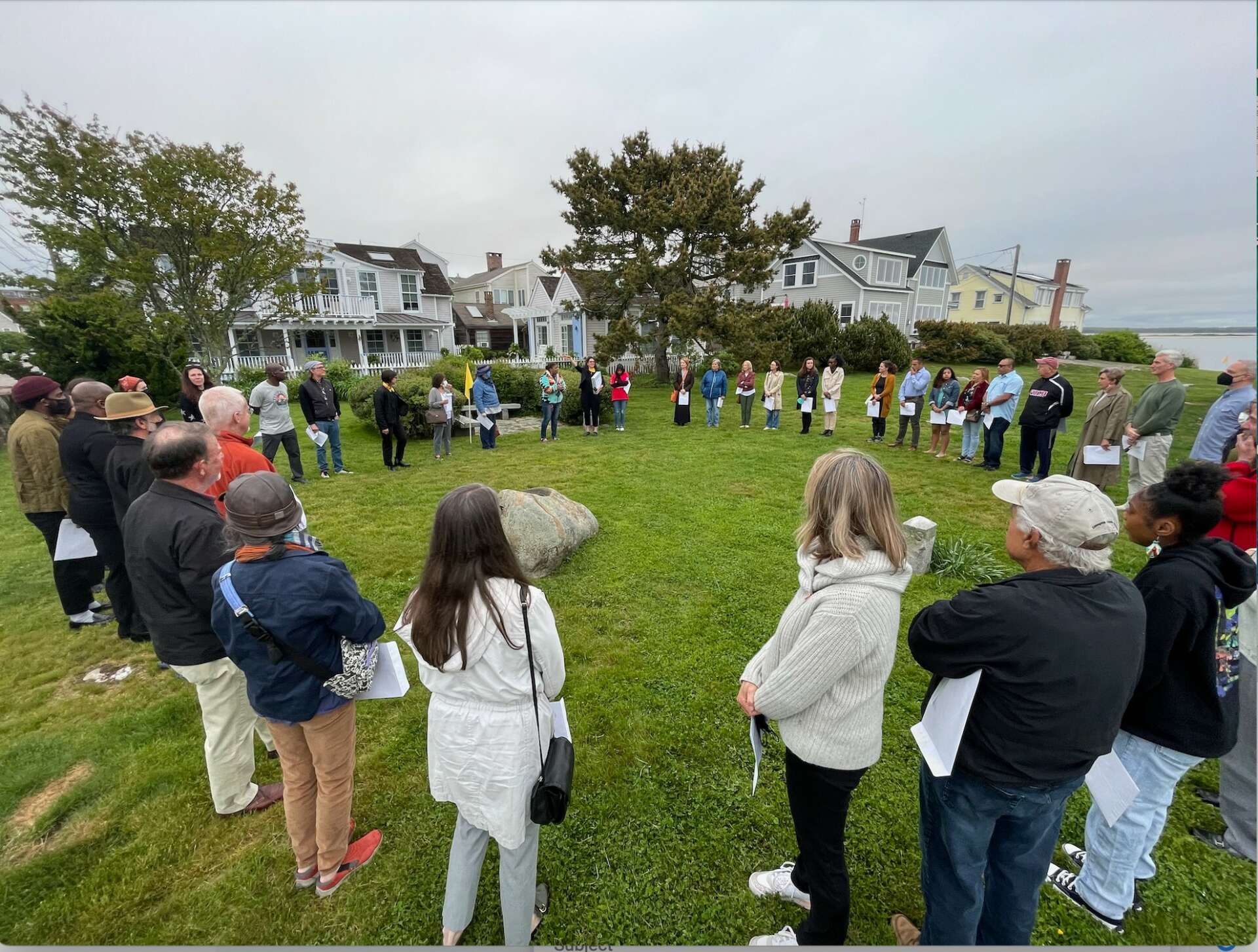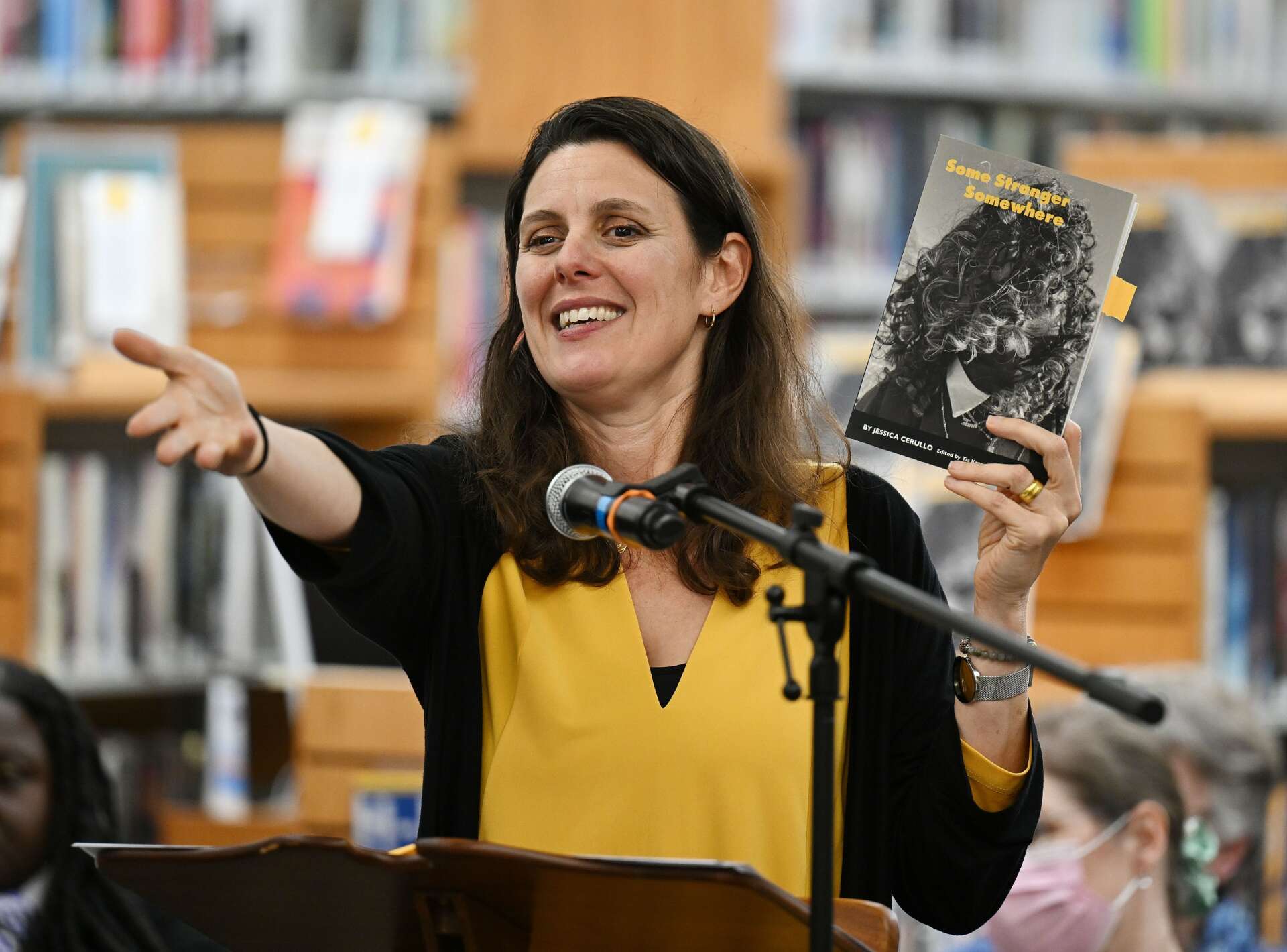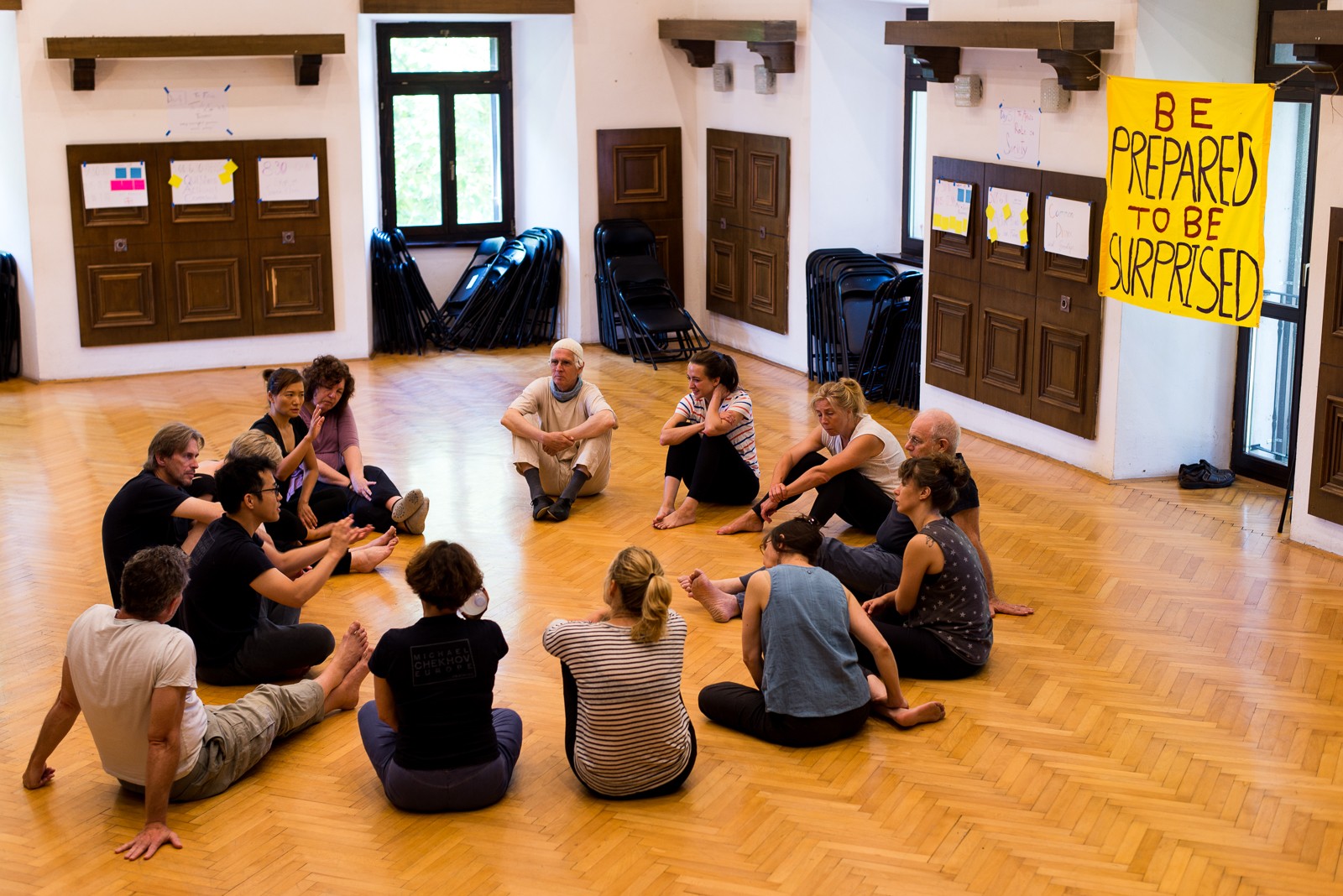Alright – so today we’ve got the honor of introducing you to Jessica Cerullo. We think you’ll enjoy our conversation, we’ve shared it below.
Jessica, thanks for taking the time to share your stories with us today What’s been the most meaningful project you’ve worked on?
When the pandemic hit, the theater – the place I called home – no longer existed in a way I recognized. Without the ability to engage in live rehearsal and performance, I was lost. The art of gathering for rehearsal and for performance, the dynamic flow that transpires between audiences and performers, was like oxygen for me and suddenly I was suffocating from the isolation. Of course many zoom solutions emerged in the theater community but none satisfied my need to connect in real space and time. So, in a leap of faith, I began creating on-the-spot performances with the strangers I encountered in my everyday pandemic life. The gas station attendant, mother at a playground, mammogram technician, librarian, guidance counselor, teacher, barista —
At one point I was inspired by a line in a poem by Henry Wadsworth Longfellow where he describes what happens when ships unexpectedly pass in the night and shine a light to announce their presence. I decided to use my attention like a beacon of light. And our project THE SHIPS IN THE NIGHT was born. I met each stranger and asked the questions I, myself, sought the answers to — what do I want my community to remember about this time? What was learned, lost, and gained? What kindnesses or cruelties should not be forgotten? I sought to claim and reframe this difficult time by harnessing the creative power that can only be found in the space between two people when they listen to one another. And I wanted to make a space for the transformational shift that can occur when we allow ourselves to be heard and seen. For thousands of years the theater has guided humanity in working together to make sense of our shared world. In the pandemic’s darkest days I touched this profound truth. The poetry of the people in my community guided me.
In the end, nearly 100 poems were co-created with the strangers in my community. Then, over the course of two years we found creative ways to share these poems. We created numerous sharings of the work which took the form of public performance, lectures, a community walk and continued staging of intimate conversations. We created an archive out of the transcripts of the conversations which features 170 pages of interview transcripts, 143 pages of co-authored pandemic inspired poetry and 6.5 hours of audio representing my community’s caregivers. We also published a book titled “Some Stranger Somewhere”, featuring a selection of the poems and documenting the whole project.
Above all the project allowed us to celebrate our resiliency. It gave us pause at a time when society, and our own impatience, was pushing us unforgivingly forward. Sometimes you have to look back before you can move forward. And in those times I find it helpful to be with others.
As always, we appreciate you sharing your insights and we’ve got a few more questions for you, but before we get to all of that can you take a minute to introduce yourself and give our readers some of your back background and context?
I am an interdisciplinary artist and educator and my training and career is rooted in the theater. I work with individuals and communities to tell the stories that are central to their identity and sense of belonging. In doing so I seek to promote community health and relational resilience. My art making is grounded in a variety of somatic and contemplative practices.
The arts transform us. They can help us connect to the natural world and to one another. They support us in learning, in managing stress, dissolving boundaries, and in engaging all of our senses and in making sense of our shared world. I work with individuals and communities to connect with the arts so that people can tell the stories that are central to their identities and sense of belonging. And so that they can choose to listen to the experiences of others. As an interdisciplinary artist who trained and worked in the professional theater I rely on improvisation, games, and a variety of contemplative and somatic practices. All of my creative work invests in the development of the creative individuality of every person I encounter.
One project I am especially proud of is the BECAUSE YOU ARE HERE project that I initiated with my collaborator, Tia Kramer in eastern Washington. I lived in the Walla Walla Valley for about 10 years while teaching theater at liberal arts college. During my time there I instigated a series of community projects with the immigrant and migrant communities. The relationships and art that we made during those years continue to this day and the initiatives I helped to birth function now without me. This is the best feeling — when I am no longer needed and the individuals and communities whose stories and creative impulses my work sought to amplify, take the lead.

In your view, what can society to do to best support artists, creatives and a thriving creative ecosystem?
The arts and artists need to be invited to the table early on. Often we are an after thought and infrastructure is created without us and we are invited in at the end as a finishing touch. I encourage communities to bring artists in at the ground level. Our skills as collaborators and innovators can serve in ways you can’t imagine or plan for in advance. Sure, we can take direction, but we understand and value process and are very good at asking questions and touching the pre-verbal images and gestures that any truly successful project needs to embody and find expression for.
Budget for us and pay us like you would any working professional. That does not mean these arts do not have worth or should not be compensated. And paradoxically, often it is the ephemeral that remains with us the longest.

Have any books or other resources had a big impact on you?
Barbara Dilley’s book – This Very Moment: Teaching, Thinking, Dancing has been central to developing the core of my philosophy. It directs me in my capacity for daydreaming and on-going daily practice. It provides the support that underlies all of my creative impulses and attends to my capacity for resilience. It helps me to connect with joy and delight as an artist and human on the daily.
Liz Lerman’s Critical Response Process is has been a wonderful tool for giving and receiving feedback on any creative endeavor. From the art of a conversation to the art of making and responding to any work. 


Contact Info:
- Website: https://jessicacerullo.com
- Instagram: Jes_Cerullo
- Facebook: https://www.facebook.com/jessica.cerullo.5
- Linkedin: https://www.linkedin.com/in/jessica-cerullo-698a1a26/
- Other: https://theshipsinthenight.com
- Podcast: https://podcasts.apple.com/us/podcast/a-conversation-with-social-practice-artist/id1561347362?i=1000594004808
Image Credits
David Schulz (outdoors walking and standing in a circle images) Sean D Elliot (indoors with stars images, and Jessica holding the book Some Stranger Somewhere) Luka Dubroja (“Be prepared to be surprised” image, two couples talking outside image)


